Sigma Xi 2018 Student Research Showcase
Human Behavioral & Social Sciences
 MeN and 'S': Speaking, Hearing, Perceiving
MeN and 'S': Speaking, Hearing, Perceiving
Madeleine Jean, Kenyon College
The primary question in this project is whether these three phenomena—how people speak, what people hear, and what they think about speakers—are cognitively related, or just socially.
 Evaluating Health Consequences of Nail Salon Work in Vietnamese-Americans
Evaluating Health Consequences of Nail Salon Work in Vietnamese-Americans
Clara Nguyen, Pine Crest School
Exposure to chemicals found in nail salon products commonly used by workers can have adverse effects on health. Nearly half of American nail technicians are of Vietnamese descent. To investigate the consequences of salon work within this demographic, Vietnamese-American nail salon workers (n=158) completed a survey assessing their personal health.
 The Effect of Concussion Education on the Perception of Injury Severity
The Effect of Concussion Education on the Perception of Injury Severity
Kennedy Hobert, George Fox University
We looked at how concussion education influenced the perception of injury severity. Participants who received concussion education did not rate injuries more severely than those who did not.
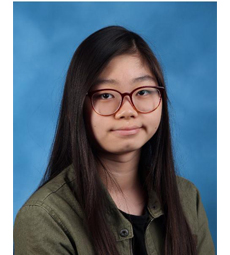 A 20% Improvement in US Educational Achievement by Means of a New Methodology Based on Precise Brain Area Control by Inhibitory Visual Attention (Applicable even to Medically Untreatable ADHD Disorder)
A 20% Improvement in US Educational Achievement by Means of a New Methodology Based on Precise Brain Area Control by Inhibitory Visual Attention (Applicable even to Medically Untreatable ADHD Disorder)
Elizabeth Jung, Bronx High School of Science
This project’s goal is to improve education of the 30% of students in the US who fail to graduate high school.
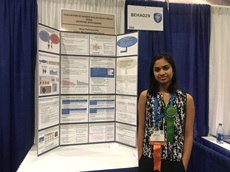 Evaluation of Gender Bias in Social Media using Artificial Intelligence
Evaluation of Gender Bias in Social Media using Artificial Intelligence
Nitya Parthasarathy, Northwood High School
Using novel statistical metrics, this project first demonstrates the strong positive connotation between gender and expected “societal roles” in social media. Next, Artificial Intelligence (AI) algorithms are developed to mathematically quantify the bias.
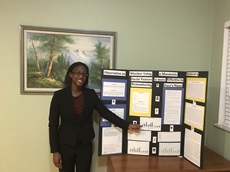 Observation on Whether Using a Mnemonic Device or a Facial Feature is More Effective in Remembering a Face’s Name
Observation on Whether Using a Mnemonic Device or a Facial Feature is More Effective in Remembering a Face’s Name
Rachel Rose, American Heritage School
The purpose of this project was to determine if using a mnemonic device or a facial feature is more effective in remembering a face’s name. A series of 10 faces were shown to participants and they were instructed to either write down a mnemonic device or a prominent facial feature according to the name and corresponding face.
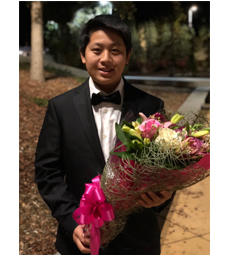 Can a Summer Camp Increase Children’s Knowledge of the Bill of Rights?
Can a Summer Camp Increase Children’s Knowledge of the Bill of Rights?
Eric Lee, Monta Vista High School
My study investigates the effect of the Orange County Peace Camp on young children, especially on their skills for social justice, leadership, conflict resolution, leadership, and their knowledge of their fundamental rights. By incorporating information of the Bill of Rights into the curriculum, and bringing children from homeless shelters to attend the camp, I have gained insight on how summer camps may be an effective form of education, especially for young children.
 Autism Spectrum Disorder (ASD) Education in India
Autism Spectrum Disorder (ASD) Education in India
Tanmay Vijaywargiya, American Heritage School
My presentation is about finding new Autism Spectrum Disorder therapies, trainings, and technologies in the US and transferring them to Arunabh, a special needs school, in Indore, India.
 Effects of Transcranial Magnetic Stimulation on Insula-Based Functional Connectivity
Effects of Transcranial Magnetic Stimulation on Insula-Based Functional Connectivity
Sade Abiodun, Duke University
TMS is a neuromodulatory technique that can be used to enhance or decrease the function of certain brain regions. We wanted to see how this technique could influence the insula and its control over pain tolerance.
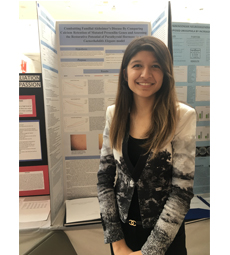 Combatting Familial Alzheimer's With Novel PTH Therapy
Combatting Familial Alzheimer's With Novel PTH Therapy
Amber Bhutta, American Heritage School
Alzheimer's Disease is one of the leading causes of death in the United States. Using the calcium release properties of Parathyroid Hormone, my project looks at targeting abnormal calcium retention levels in the endoplasmic reticula of neurons in order to find a mechanism for slowing the progression of Familial Alzheimer's Disease.
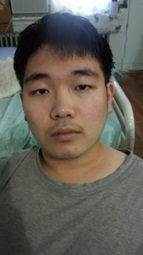 A Novel Method for Diagnosing PTSD
A Novel Method for Diagnosing PTSD
Andrew Lee, Bronx High School of Science
It explains my project as well as explaining the reasons as to why I chose to do this project. Furthermore, the image that is being used with my slide represents the participant's at each time interval. Number 2 is the 25 second mark, number 3 is the participant at the 40 second mark, and number 11 is the participant at the 60 second mark.
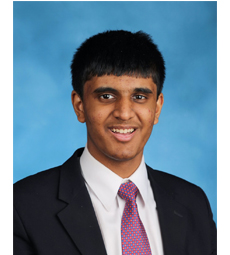
Conclusive Proof of the Covariance between Hallucinations and Delusions and the Presence of an Underlying Mechanism for these with Applications in Psychosis Treatment
Ajeya Shiva, Bronx High School of Science
The initial goal of my project was to develop a new quantitative methodology for detection and treatment of neurodegenerative disorders. With regards to this goal, realizing that such a broad analysis would be infeasible, I decided to give my project a focus by applying it to something specific. I focused on studying the connection between two of the main symptoms of psychosis, hallucinations and delusions.
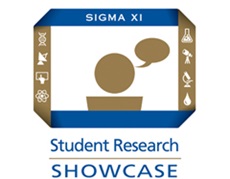 Simulated Targeted Experiments in the Primary Motor Cortex
Simulated Targeted Experiments in the Primary Motor Cortex
Ryoha Mitsuya, Bronx High School of Science
This presentation will discuss my research on running targeted experiments on Pyramidal neurons in the Primary Motor Cortex to study their intrinsic characteristics and functionality.